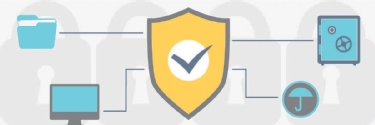Security
This cyber security glossary explains the meaning of terms about different types of computer security threats as well as words about application security, access control, network intrusion detection, security awareness training and computer forensics.
Authentication and access control
Terms related to authentication, including security definitions about passwords and words and phrases about proving identity.
-
adaptive multifactor authentication (adaptive MFA)
Adaptive multifactor authentication (MFA) is a security mechanism intended to authenticate and authorize users through a variety of contextual authentication factors.
-
privileged identity management (PIM)
Privileged identity management (PIM) is the monitoring and protection of superuser accounts that hold expanded access to an organization's IT environments.
-
possession factor
The possession factor, in a security context, is a category of user authentication credentials based on items that the user has with them, typically a hardware device such as a security token or a mobile phone used in conjunction with a software token.
Compliance, risk and governance
This glossary contains definitions related to compliance. Some definitions explain the meaning of words used in compliance regulations. Other definitions are related to the strategies that compliance officers use to mitigate risk and create a manageable compliance infrastructure.
-
business process outsourcing (BPO)
Business process outsourcing (BPO) is a business practice in which an organization contracts with an external service provider to perform an essential business function or task.
-
cyber resilience
Cyber resilience is the ability of a computing system to identify, respond and recover quickly should it experience a security incident.
-
PCAOB (Public Company Accounting Oversight Board)
The Public Company Accounting Oversight Board (PCAOB) is a congressionally established nonprofit that assesses audits of public companies in the United States to protect investors' interests.
Network security
Terms related to network security, including definitions about intrusion prevention and words and phrases about VPNs and firewalls.
-
CIA triad (confidentiality, integrity and availability)
The CIA triad refers to confidentiality, integrity and availability, describing a model designed to guide policies for information security within an organization.
-
session ID
A session ID, also called a session token, is a unique identifier that a web server assigns to a user for the duration of the current session.
-
offensive security
Offensive security is the practice of actively seeking out vulnerabilities in an organization's cybersecurity.
Security Admin
Terms related to security management, including definitions about intrusion detection systems (IDS) and words and phrases about asset management, security policies, security monitoring, authorization and authentication.
-
Zoombombing
Zoombombing is a type of cyber-harassment in which an unwanted and uninvited user or group of such users interrupts online meetings on the Zoom video conference app.
-
CIA triad (confidentiality, integrity and availability)
The CIA triad refers to confidentiality, integrity and availability, describing a model designed to guide policies for information security within an organization.
-
session ID
A session ID, also called a session token, is a unique identifier that a web server assigns to a user for the duration of the current session.
Threat management
Terms related to security threats, including definitions about anti-virus programs or firewalls and words and phrases about malware, viruses, Trojans and other security attacks.
-
CIA triad (confidentiality, integrity and availability)
The CIA triad refers to confidentiality, integrity and availability, describing a model designed to guide policies for information security within an organization.
-
session ID
A session ID, also called a session token, is a unique identifier that a web server assigns to a user for the duration of the current session.
-
cyber attack
A cyber attack is any malicious attempt to gain unauthorized access to a computer, computing system or computer network with the intent to cause damage.
